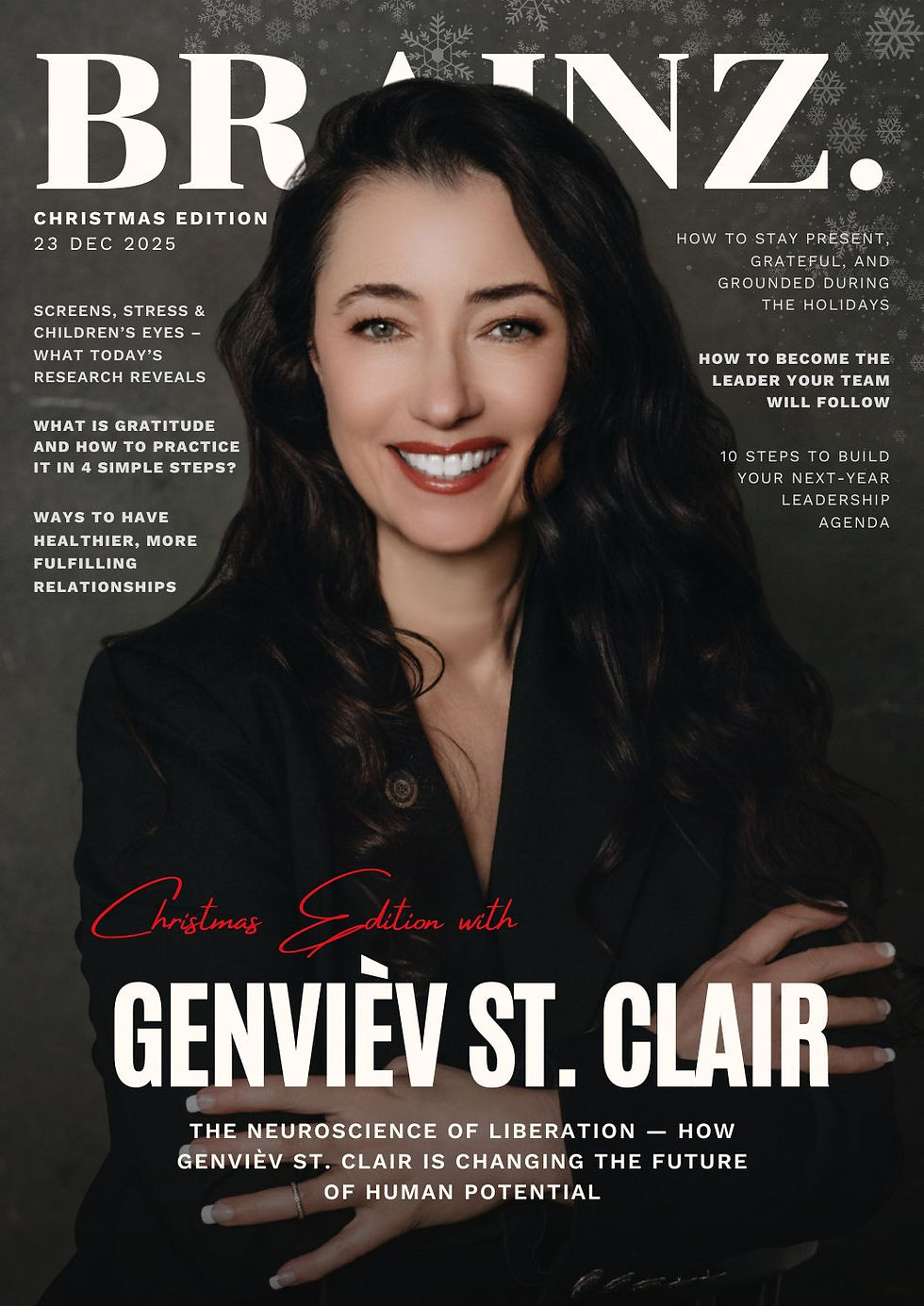Why Embedding Well-Being Into Wellness Programs Matters
- Brainz Magazine

- Jun 23
- 4 min read
Updated: Jun 25
Dr. Arlayn Castle professionally known as "Dr. Arlayn" is renowned for helping divorced professionals rediscover life with confidence and resilience. CEO of A Castle of Knowledge®, LLC ( a Life Coaching and Wellness Consulting company), and a Speaker & Author of Secrets and Principles of Effective Co-Parenting: Mom, Dad; What About Me?

Wellness programs are no longer just add-ons or perks. Embedding well-being means making mental, emotional, physical, and social health core pillars of your organizational culture, integrated into processes, spaces, leadership, and daily habits.

What does embedded well-being look like?
Integrated into strategy and leadership: Embedding well-being means including it in your mission, leadership training, and employee goals. When leaders actively champion emotional safety and mental resilience, it shifts from optional to essential.
Part of daily experience: From quiet break rooms to routine mindfulness pauses, supporting well-being is woven into daily work life. These moments show employees their full selves matter, not just their to-do lists.
Responsive to real needs: Embedding means designing wellness to meet what employees actually need, including life challenges and transitions.
Why this approach drives retention and engagement
Employees feel truly valued: When well-being is embedded, people feel seen. Gallup reports that employees who feel recognized are 45% less likely to leave.
Boosts well-being and productivity: Embedded wellness programs deliver healthier, more engaged teams. For every dollar invested in mental health, organizations see a roughly four-dollar return in productivity and well-being.
Reduces absenteeism and burnout: Embedding well-being through emotional resilience, mental health support, and social connection leads to fewer sick days and stronger presence.
Increases retention: A 2023 APA survey shows that 92% of employees believe employers should support emotional and psychological health at work. When organizations deliver, attrition drops significantly.
How to embed well-being in your workplace
Make it strategic: Include well-being metrics in leadership KPIs, budgets, and quarterly reviews. Recognize managers for fostering psychological safety.
Design for inclusion: Build programs from employee input through focus groups and surveys. Prioritize diverse needs like stress relief, life transitions, and caregiving support.
Create daily touchpoints: Offer mindfulness breaks, connected spaces, and emotionally intelligent check-ins. Normalize conversations around well-being with team rituals and peer support.
Train leaders: Equip managers to notice stress, respond with empathy, and guide teams to resources. Leadership emotional intelligence matters more than wellness perks alone.
Measure and grow: Use retention rates, engagement surveys, absenteeism data, and ROI estimates to evaluate impact. Studies indicate $3 to $6 saved for every dollar spent on holistic programs.
The role of the CASTLE blueprint in embedded well-being
Embedded well-being is exactly what the CASTLE Blueprint by Dr. Arlayn is designed to support. As a trauma-informed, leadership-aligned framework, it uniquely addresses the emotional and identity challenges that professionals face during high-impact life transitions, such as caregiving, role changes, and personal reinvention, while maintaining their performance at work.
What sets this solution apart is its integration of four distinct pillars:
Psychology, through emotional intelligence and mindset work
Law, through decision-making clarity and personal agency
Leadership, through empowerment and future-focused action
Lived experience, providing authentic credibility and deep empathy
Unlike traditional wellness programs that focus solely on stress management or surface-level self-care, the CASTLE Blueprint offers:
Targeted support during life challenges, disruptions, and transitions
Tools to strengthen emotional regulation, confidence, and resilience
A structured, scalable format designed for professional environments
It is one of the only wellness models built specifically for professionals navigating personal disruption while continuing to meet the demands of their careers. Whether in leadership, support, or transitional roles, the CASTLE Blueprint equips them with tools to stay grounded both personally and professionally.
Resource guide: Embedding well-being into workplace wellness
1. Assess and listen
Conduct anonymous surveys or focus groups
Ask about identity changes, caregiving, and emotional transitions
Audit current wellness program gaps
2. Make it visible
Integrate well-being into communications and performance reviews
Use anonymous stories to show impact
3. Choose programs with depth
Select trauma-informed, emotionally intelligent solutions
Avoid one-size-fits-all wellness apps
4. Design for anonymity and safety
Offer private participation options
Use self-paced, low-barrier formats
5. Support with manager training
Provide emotionally intelligent training tools
Model psychological safety at the top
6. Measure and grow
Use KPIs like retention and engagement
Collect feedback and adjust offerings accordingly
Ready to embed well-being into your workplace?
Let’s bring real wellness to life. If you're ready to embed a trauma-informed, strategic wellness program into your culture, we’re here to help.
Download the free guide: CASTLE Embedded Well-Being Resource Guide
Contact us at info@castleofknowledge.com or call (818) 276-6199
Empower your team. Reduce emotional burnout. Build a culture where your people stay, grow, and thrive.
Read more from Dr. Arlayn Castle
Dr. Arlayn Castle, Empowerment Strategist and Corporate Wellness Consultant
Dr. Arlayn is a distinguished thought leader in personal transformation and mindset coaching. After navigating an emotionally overwhelming divorce as a career professional, she developed innovative tools and strategies that propelled her into a life of joy, peace, and fulfillment. Over the past several years, Dr. Arlayn has empowered divorce professionals to overcome heartbreak, rediscover their intrinsic value, and embrace new beginnings. As CEO of A Castle of Knowledge®, LLC, she leads exclusive Divorce Coaching and Employee Wellness programs and is a firm believer that life after divorce is not about starting over but about rising higher.










.jpg)